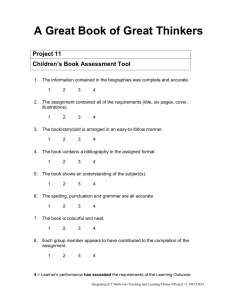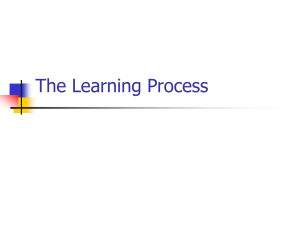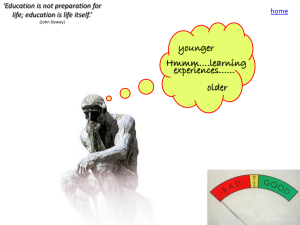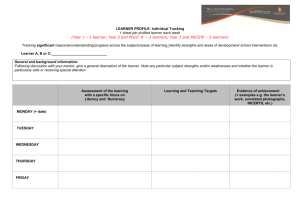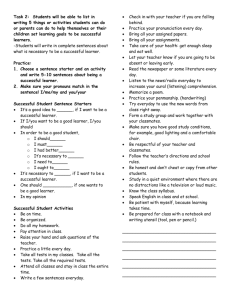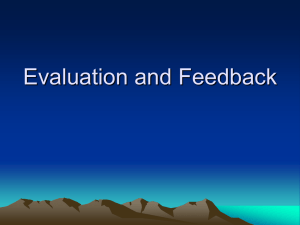Effective Instructional Cycle and Gagne`s 9 Events of Instruction
advertisement
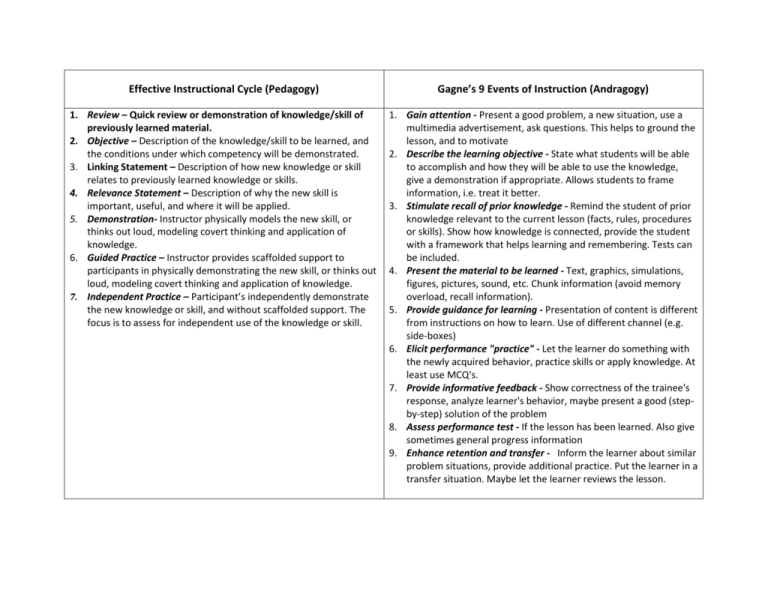
Effective Instructional Cycle (Pedagogy) Gagne’s 9 Events of Instruction (Andragogy) 1. Review – Quick review or demonstration of knowledge/skill of previously learned material. 2. Objective – Description of the knowledge/skill to be learned, and the conditions under which competency will be demonstrated. 3. Linking Statement – Description of how new knowledge or skill relates to previously learned knowledge or skills. 4. Relevance Statement – Description of why the new skill is important, useful, and where it will be applied. 5. Demonstration- Instructor physically models the new skill, or thinks out loud, modeling covert thinking and application of knowledge. 6. Guided Practice – Instructor provides scaffolded support to participants in physically demonstrating the new skill, or thinks out loud, modeling covert thinking and application of knowledge. 7. Independent Practice – Participant’s independently demonstrate the new knowledge or skill, and without scaffolded support. The focus is to assess for independent use of the knowledge or skill. 1. Gain attention - Present a good problem, a new situation, use a multimedia advertisement, ask questions. This helps to ground the lesson, and to motivate 2. Describe the learning objective - State what students will be able to accomplish and how they will be able to use the knowledge, give a demonstration if appropriate. Allows students to frame information, i.e. treat it better. 3. Stimulate recall of prior knowledge - Remind the student of prior knowledge relevant to the current lesson (facts, rules, procedures or skills). Show how knowledge is connected, provide the student with a framework that helps learning and remembering. Tests can be included. 4. Present the material to be learned - Text, graphics, simulations, figures, pictures, sound, etc. Chunk information (avoid memory overload, recall information). 5. Provide guidance for learning - Presentation of content is different from instructions on how to learn. Use of different channel (e.g. side-boxes) 6. Elicit performance "practice" - Let the learner do something with the newly acquired behavior, practice skills or apply knowledge. At least use MCQ's. 7. Provide informative feedback - Show correctness of the trainee's response, analyze learner's behavior, maybe present a good (stepby-step) solution of the problem 8. Assess performance test - If the lesson has been learned. Also give sometimes general progress information 9. Enhance retention and transfer - Inform the learner about similar problem situations, provide additional practice. Put the learner in a transfer situation. Maybe let the learner reviews the lesson.




